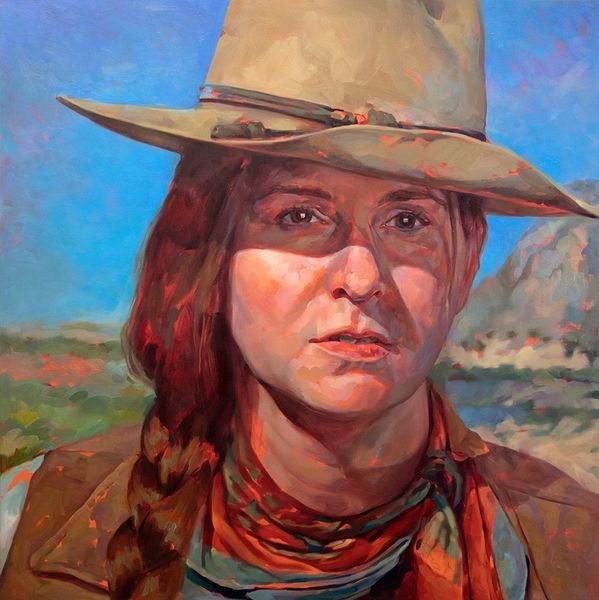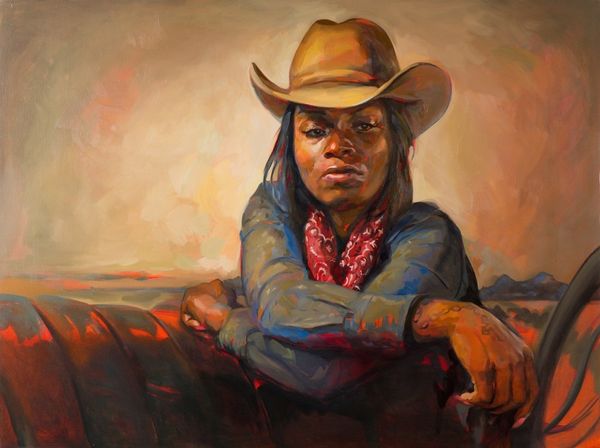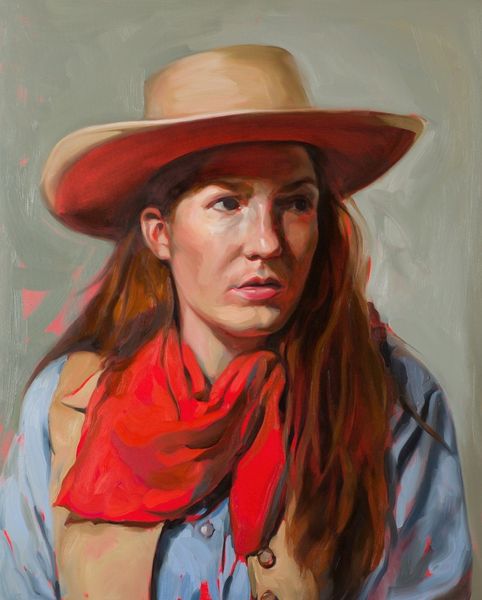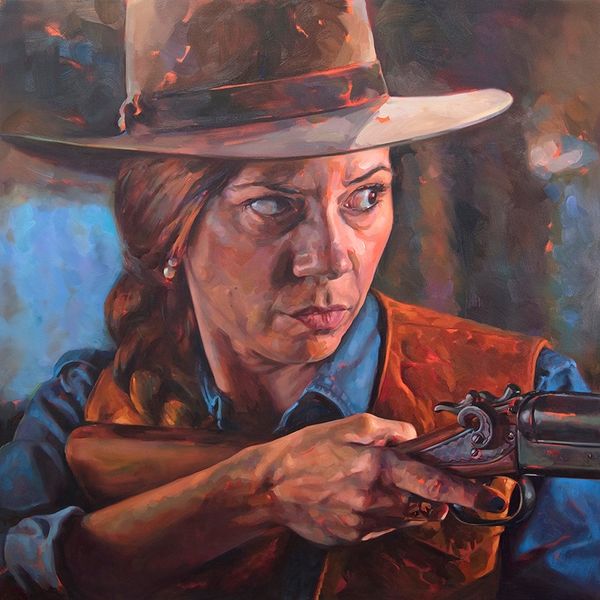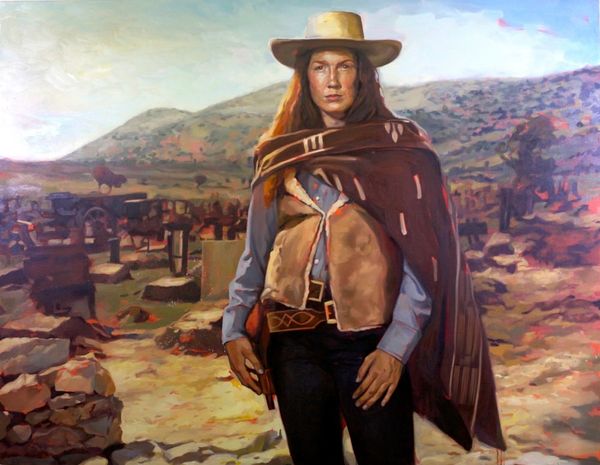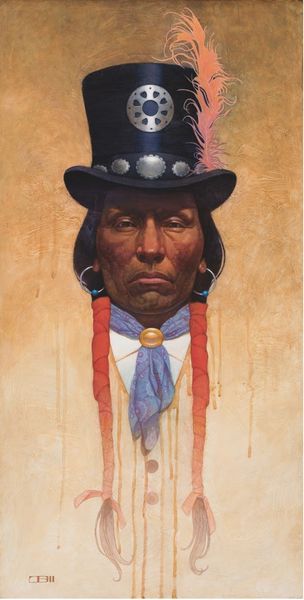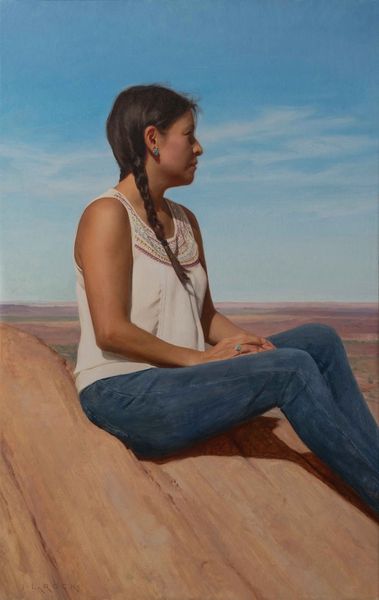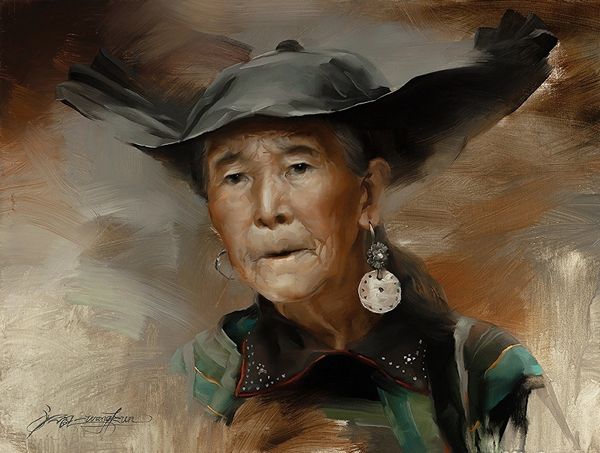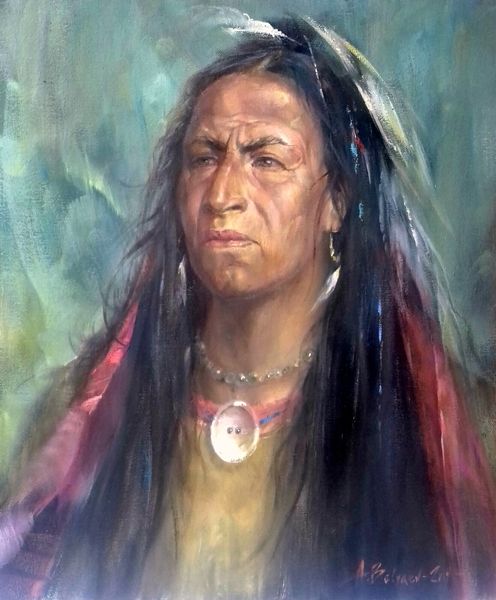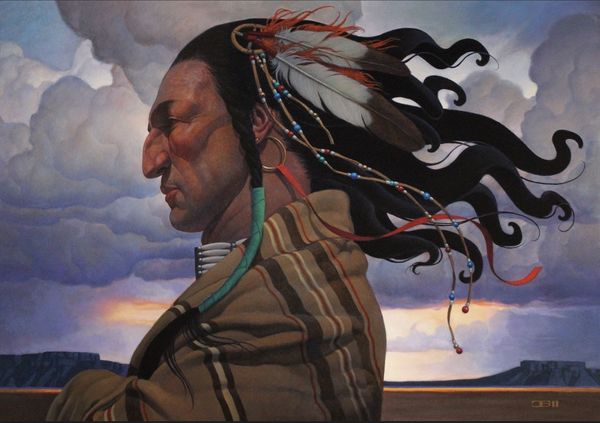
painting, acrylic-paint
#
portrait
#
figurative
#
contemporary
#
painting
#
acrylic-paint
#
acrylic on canvas
#
realism
Copyright: Modern Artists: Artvee
Curator: We're looking at Felice House's "Weiling Eastwood" from 2019, an acrylic on canvas. The sitter’s gaze certainly draws you in. Editor: Indeed. I'm struck by how the colors create a rather tranquil mood, despite the sitter's direct, almost challenging look. There's a tension between the calm background and the intensity of the subject’s expression. Curator: I agree; it is the use of impasto that attracts my attention. House layers thin hues of primarily tonal reds and yellows in a realist painting style, emphasizing volume, space, and depth in the process. Weiling Eastwood's identity, signaled through the reference of Clint Eastwood in the artwork's title, becomes disrupted because the gaze and attire contrasts with expectations of the historically white dominated Hollywood. Editor: The appropriation is unmistakable. We're asked to consider gender, race, and the ongoing power dynamics within Western film and celebrity culture. I mean, Eastwood embodies a rugged masculinity that has been traditionally defined as ‘white’. Placing a female sitter within that frame destabilizes those archetypes. How has masculinity played a part in constructions of race through the Western genre? Curator: We can certainly appreciate it from that point of view. Also consider the hat— a formal element adding complexity to the overall composition, playing with light and shadow, shaping the space around the head and subtly framing the gaze. Editor: But the hat also reads as cultural commentary, right? The hat references specific cultural attire, and prompts reflection on why specific racial or gender identities do, or do not, get recognized in the culture industry, through clothing or appearance, and what the political and power dynamics are at work. Curator: It seems House intentionally destabilizes the subject position by introducing certain artistic languages to critique how we gaze upon portraits, particularly Westernized ideas around gender, class, and race. Editor: Absolutely. By re-casting those familiar tropes, House prompts us to question the narratives we consume and the biases they perpetuate. It goes beyond just the subject. It is a prompt for broader intersectional dialogues. Curator: The semiotic richness lies in the tension between form and socio-political undertones, opening a complex viewing for different interpretive possibilities. Editor: Which is where its true power resides: in asking us to question, reconsider, and ultimately, redefine our perspectives.
Comments
No comments
Be the first to comment and join the conversation on the ultimate creative platform.
